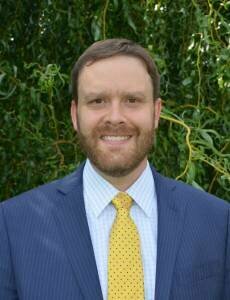 (Credit: Canva Pro)
(Credit: Canva Pro)As of August 2, humanity has been using ecological resources beyond what the earth is capable of regenerating for the year. Known as Earth Overshoot Day, this annual mark serves as a reminder that we live on a resource-constrained planet. Our society has been designed to discard waste in a landfill in a very linear supply chain and product life cycle.
To make better use of the limited resources on our planet, recycling, remanufacturing, and reusing materials at the end of their life cycle through a circular economy is vital to reducing raw material consumption. With 37% of CO2 emissions coming from the built environment (UN 2022 GlobalStatus Report for Buildings and Construction), a circular economy is an especially critical evolution for the building industry. We must ask ourselves as consumers, manufacturers, and community members, what can we do to move toward circularity?
For several hundred years, society has produced and perfected a linear economy -- delivering products to an end consumer and eventually to a landfill at the end of their initial life. To create a circular system, we must actively fight against this history and challenge the systems we’re so familiar with. Where we stand now, the global economy is only 7.2% circular, a regression from 9.1% in 2018 (Circularity Gap Report). A vital piece of increasing our circularity, yet to be perfected, is the adoption of reverse supply chains. It falls on all stakeholders to ensure the raw materials that make up the products we use every day are harvested at their highest value to give them a second life in a circular economy.
With development and large-scale enactment of reverse supply chains, manufacturers should expect to see a reduction in production costs and a reduction of environmental impact over time. Right now, the circular economy is a developing system with many pieces of reverse supply chains unoptimized, meaning initial costs are likely higher. However, this is a temporary issue. By optimizing this system, we can all expect to see lower costs and reduced environmental impact.
In recent years, we’ve seen manufacturers experience major cost volatility associated with supply and demand. The more wide-scale usage of recycled materials will help mitigate this market volatility by enabling manufacturers to be less reliant on virgin raw materials in our resource-constrained world. Additionally, utilizing circular and recycled materials generally helps reduce a manufacturer’s scope three emissions and sometimes even scope one and scope two emissions. For example, CertainTeed’s use of recycled glass in insulation production takes less energy to melt and reuse, reducing both scope one, two, and three emissions.
Product manufacturers hold a lot of responsibility to design and deliver on products that will enable a circular economy. However, it is not the responsibility of one sector or one piece of the puzzle to make reverse supply chain processes work.
The reverse supply chain includes end consumers, raw material suppliers, and everyone in between. Here, leadership means advocating to make sure that everyone in the reverse supply chain is compensated, to make sure everyone is incentivized in the process.
As a manufacturer, we must develop products that can be easily deconstructed in a way that allows reuse or the harvesting of raw material. While we’ve seen an increase in companies offering take-back systems, it is critical to consider that local reuse has the most impact, recognizing and prioritizing existing community value. Reinvesting the inherent wealth of existing materials back into the community can create employment and economic opportunities and contribute to achieving affordable housing goals. An organization like BuildReuse.org is a great resource for local information.
A circular economy also places responsibility on population centers to develop systems and enact favorable legislation within waste management and policy. One example, Circular Philadelphia, has a multi-prong approach focused on education within the built environment and other sectors, bringing together consumers, businesses, institutions, and policy makers to lead the shift to a circular economy in the region.
For more than 200 years, we’ve functioned within a linear economy in which products were manufactured with the sole purpose of being used until they no longer served their designed purpose, to then be deposited into a landfill. Recognizing the limitations of living in a resource-constrained environment, we need to shift our collective way of thinking to consume less, choose more sustainable products, and advocate for systematic change to conserve our already limited resources.
According to the Ellen Macarthur Foundation, creating a circular economy for five sectors — cement, aluminum, steel, plastics, and food — could cut CO2 emissions by 3.7 billion tons by 2050, which is the equivalent of eliminating current emissions from all forms of transport. While achieving a circular economy won’t happen overnight, we must make a conscious effort to combat this centuries-old linear approach and optimize reverse supply chains.
Author Bio:
Dennis Wilson is the Vice President of ESG and Managing Director for Saint-Gobain Circular Economy Solutions in North America. Saint-Gobain is the parent company of building products leader CertainTeed. Wilson joined CertainTeed/Saint-Gobain in 2007 as Manager of Health and Safety and has since worked in a variety of operational Environment, Health & Safety (EHS), product stewardship, and sustainability roles. Under his leadership, Wilson’s team manages Saint-Gobain North America’s stewardship and sustainability efforts, including waste, water, energy, greenhouse gas reduction, and product life cycle management and assessment.

Connect with Dennis and CertainTeed: